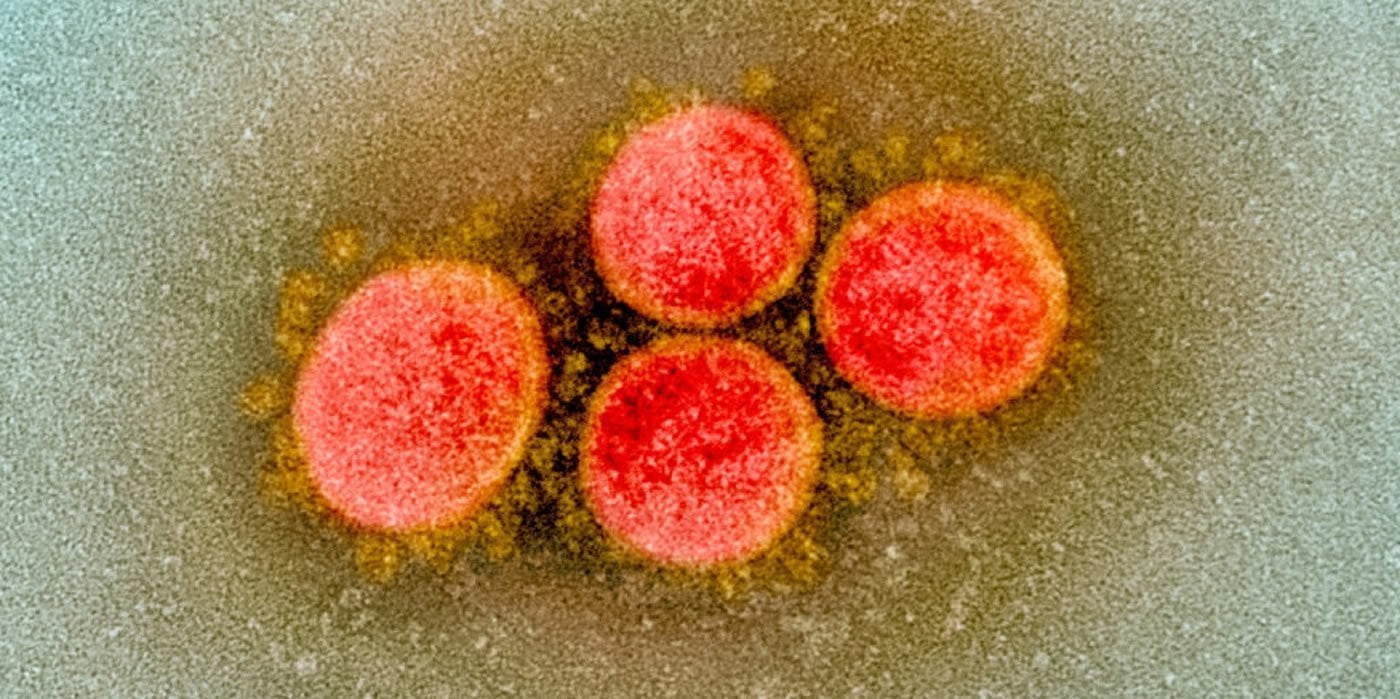Summary: SARS-CoV-2, the virus responsible for COVID-19, enters human cells by attaching to ACE2 and utilizing TMPRSS2. Drugs that block ACE2 or inhibit the enzyme could help treat the coronavirus, but only during early infection. As the infection progresses, SARS-CoV-2 becomes engulfed in human cells, reducing the number of ACE2 receptors on a cell and leading to an increase of angiotensin II in the blood. Angiotensin II triggers an inflammatory pathway, providing a positive feedback cycle, named IL-6 amplifier, resulting in excessive immune activation and the cytokine storm associated with severe COVID-19.
Source: Hokkaido University
Research into how the SARS-CoV-2 virus induces death is suggesting potential treatments for its most destructive complications.
Leading immunologists in Japan are proposing a possible molecular mechanism that causes massive release of proinflammatory cytokines, or a cytokine storm, leading to the acute respiratory distress syndrome (ARDS) in COVID-19 patients. Their suggestions, published in the journal Immunity, are based on recent findings that explain how SARS-CoV-2 enters human cells.
ARDS is a life-threatening condition in which lungs become so inflamed and filled with fluid that they struggle to provide enough oxygen to the body. “To rescue the patients from this condition, it is vital to understand how SARS-CoV-2 triggers the cytokine storm, that leads to ARDS,” explains Masaaki Murakami, the head of immunology laboratory at Hokkaido University’s Institute for Genetic Medicine.
Murakami, together with his collaborator Toshio Hirano from the National Institutes for Quantum and Radiological Science and Technology, reviewed two recent studies by Zhou et al. and Hoffmann et al. in order to understand their implications for finding effective therapeutic strategies for ARDS in COVID-19 patients.

Together, the studies suggest that SARS-CoV-2 enters human cells by attaching to a cell surface receptor called ACE2 and utilizing a human enzyme called TMPRSS2. “Drugs that block the ACE2 receptor or that inhibit the enzyme could help treat the initial stages of the disease,” says Murakami. “However, ARDS with cytokine storm starts to appear in the later phase of infection even when the number of virus decreases. So, there must be another pathway that causes the cytokine storm.”
SARS-CoV-2 is known to be engulfed into the human cell along with the ACE2 receptor it had combined with. “This reduces the number of ACE2 receptors on cells, leading to an increase of a polypeptide, called angiotensin II, in the blood,” says Murakami. Angiotensin II triggers an inflammatory pathway involving NF-κB and IL-6-STAT3 particularly in nonimmune cells including endothelial cells and epithelial cells. “This pathway forms a positive feedback cycle, named IL-6 amplifier, resulting in its excessive activation and therefore the cytokine storm and ARDS,” says Hirano, a pioneer in IL-6 research.
“Part of this pathway involving NF-κB or IL-6-STAT3, or the both, is enhanced with age, which could be why older people are more at-risk of death following COVID-19 infection compared to other age groups,” explains Murakami. “Targeting these pathways, such as with the anti-IL-6 receptor antibody called tocilizumab, could disrupt this life-threatening inflammatory reaction in COVID-19 patients,” Hirano added.
About this coronavirus research article
Source:
Hokkaido University
Media Contacts:
Caroline Seydel – Hokkaido University
Image Source:
The image is credited to NIH/NIAID.
Original Research: Open access
“COVID-19: A New Virus, but a Familiar Receptor and Cytokine Release Syndrome”. by Toshio Hirano et al.
Immunity doi:10.1016/j.immuni.2020.04.003
Open access
“Pleiotropy and Specificity: Insights from the Interleukin 6 Family of Cytokines”. by Masaaki Murakami et al.
Immunity doi:10.1016/j.immuni.2019.03.027
Abstract
COVID-19: A New Virus, but a Familiar Receptor and Cytokine Release Syndrome
Zhou et al. (Nature) and Hoffmann et al. (Cell) identify ACE2 as a SARS-CoV-2 receptor, and the latter show its entry mechanism depends on cellular serine protease TMPRSS2. These results may explain proinflammatory cytokine release via the associated angiotestin II pathway and a possible therapeutic target via the IL-6-STAT3 axis.
Abstract
Pleiotropy and Specificity: Insights from the Interleukin 6 Family of Cytokines
Since the molecular cloning of interleukin-6 (IL-6) in 1986, many other cytokines have been found to share the same signal transducer, gp130, in their receptor complexes. Thus, the IL-6 family of cytokines now consists of ten members. Although some of the family members’ functions are redundant as a result of the expression of gp130, there are also functional distinctions between members. The mechanisms that determine functional redundancies and distinctions are not completely understood. Yet, research has clarified the role of IL-6 family cytokines in autoimmune diseases and has led to effective therapies that target them. Here, we review the IL-6 family of cytokines in autoimmune diseases, with a particular focus on the prototypical member IL-6, from the viewpoints of their structure, signaling, and biological features and discuss possible mechanisms of their functional pleiotropy.
Feel Free To Share This COVID-19 News.






